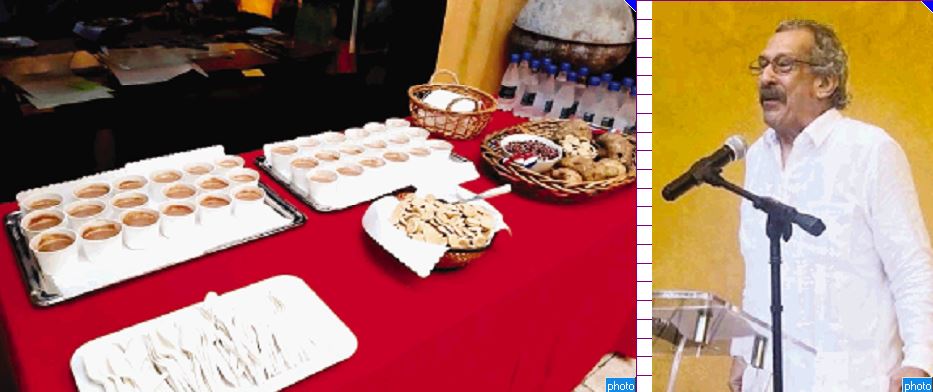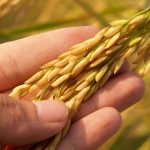Beans with candy: a unique Dominican dish in the world

Santo Domingo – The island of Santo Domingo is an ethnohistoric laboratory or archive of the Americas. It is the Caribbean territory with the greatest environmental diversity, complex history, and unique culture.
The Dominican people were structured on novel or original cultural patterns from the interbreeding of whites, blacks, and mulattos, many of whom were free.
The case of habichuelas con dulce indicates the dynamic Dominican cultural formation. The most approximate information published so far about its origin dates from the end of the 18th century and is related to the French Era in Santo Domingo. The information is provided by Dorvo Soulastre, a French military officer who came to Santo Domingo, accompanying General Hédouville on March 27, 1798.
In his report, he describes the French emigration from Saint Domingue (later Haiti) to the eastern part (today Dominican Republic), among whom was Monsieur Francois Delalande, who introduced the custom of eating legumes or beans, which could well have been the origin of our beans with sweets.
Delalande came to the country because of a family tragedy. He lived with his wife and children in Fort Dauphin, where he had a small vegetable farm, the sale of which assured him a comfortable subsistence. Misfortune struck when a mulatto asked permission to marry one of his daughters. Faced with the refusal -the marriage of whites with mulattoes and blacks was not allowed-, the suitor decided to take revenge, taking advantage of the slave rebellion in 1791, killing his daughters and persecuting the family. The father, mother, and sons fled to Monte Cristi and then to Santo Domingo, where a Spaniard, moved by the tragedy, gave him a piece of land for his subsistence.
In Santo Domingo, Soulastre ate at a table served “French style” with fruits, vegetables, and a “cream of carrot and beans” produced by Delalande and his family, who introduced them as a culinary custom among Dominicans. Before their arrival there, the inhabitants of Santo Domingo only knew the dried legumes that came from Spain or North America and had never seen them green in their markets. This had been verified by another Frenchman, Moreau de Saint-Méry, who visited Santo Domingo in 1783. Of the legumes produced by Delalande, Soulastre was especially struck by some “frijolillos” that were better cared for than others, which were eaten “as fine and sugary” as in France.
Since he could not acclimatize the French beans to the Dominican soil, he replaced them with others from the United States via Puerto Rico. In addition to these “frijolillos finos y azucarados”, Soulastre was given a snack of lacticinios, jams, pastelones de azahar, “merengues” with vanilla, dulce angélico and chocolate, among which three basic elements of the habichuelas con dulce can be identified: beans, dairy products and sugar.
The Dominican people’s process of fusion and culinary synthesis would have turned these ingredients, after the Independence of 1844, into the habichuelas con dulce. The French beans planted here and the imported beans must have been substituted by the common beans that had been in America since pre-Columbian times. Dominicans accepted the French custom and began to eat French or Creole beans, sweetened or salted.
But, if the French came from Saint Domingue, why are beans with sugar not prepared in Haiti? The answer is that the custom of eating French-style sweet beans was a culinary habit exclusive to the nobility and wealthy planters. When they disappeared from Haiti or emigrated to other places, the custom did not become popular, which, on the other hand, happened in Santo Domingo because the slaves were generally fed like their masters. The population was a mixture of all colors.
Another argument that allows linking the French “frijolillos azucarados” with the origin of the habichuelas con dulce is that Soulastre described them on the eve of Holy Week, “four days before Palm Sunday,” which indicates that they were part of this commemoration.
Cotuí inaugurated Lent with a comparsa called Mediodía, a man dressed as a woman followed by a chorus of children shouting: “Beans with candy, for the bourgeoisie, Mediodía!” In Miches, boys in disguise or tiznaos sang “muchachos que quieren/habichuelas con dulce.”
Until proven otherwise, habichuelas con dulce is a unique and authentically Dominican cultural product. They should be a worldwide exclusive in the Guinness Book of Records.
To prepare and eat habichuelas con dulce is to enjoy the taste of the homeland and the essence of Dominican culture: it is a Dominican dish that does not exist anywhere else in the world, yet it contains ingredients from all over the world.

















